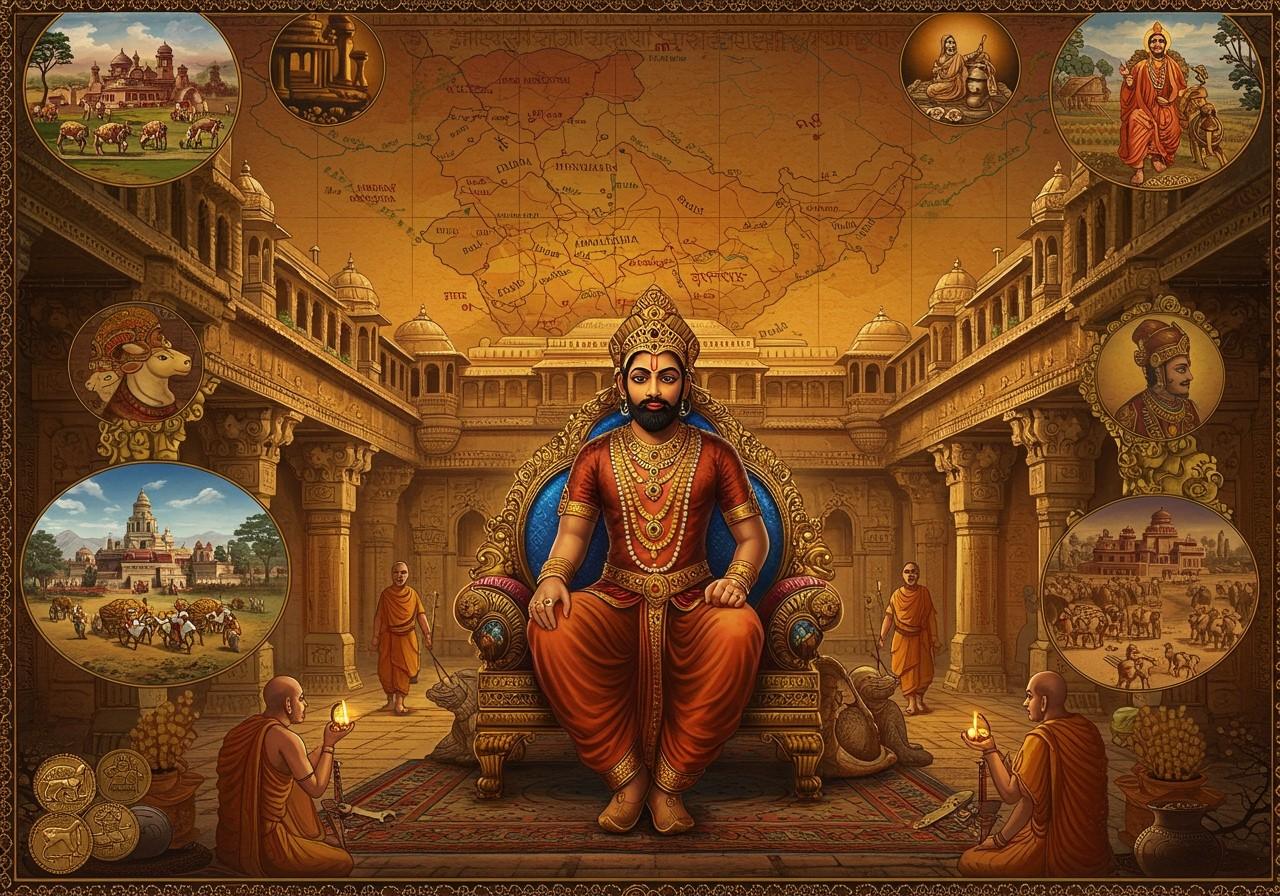The Shishunaga Dynasty: A Reign of Power and Progress in Ancient India

The Shishunaga Dynasty, a pivotal era in ancient Indian history, often remains shrouded in obscurity. Yet, it offers invaluable insights into the political, cultural, and social landscape of its time. This blog post delves into the captivating history of the Shishunaga Dynasty, exploring its origins, reign, and enduring influence on the Indian subcontinent. We’ll examine their governance, notable accomplishments, and the historical context that shaped their rule.
Origins and Rise of the Shishunaga Dynasty
Emerging around 413 BCE, the Shishunaga Dynasty succeeded the Haryanka Dynasty. Shishunaga, the dynasty’s founder, initially served as a minister under the Haryankas. Amidst political upheaval and power struggles, he ascended to the throne following a popular uprising. The dynasty’s early reign encompassed Magadha and expanded into neighboring territories. Shishunaga implemented strategic administrative reforms to consolidate his authority, marking a significant turning point in ancient Indian political history. Pataliputra, modern-day Patna, flourished as the dynasty’s capital under his rule. Furthermore, the dynasty established diplomatic ties with neighboring states and kingdoms.
The Reign of Shishunaga and His Successors
Shishunaga’s rule extended from approximately 413 BCE to 395 BCE. His reign was characterized by military campaigns, territorial expansion, and the implementation of administrative and economic policies aimed at fortifying the kingdom. Kalashoka, also known as Kakavarna, succeeded his father and further solidified the dynasty’s legacy. Under their leadership, socio-cultural developments thrived, marked by patronage of the arts and religion. The dynasty, however, faced persistent challenges, including internal dissent and external threats. Key ministers and advisors played critical roles in navigating these complexities. The dynasty’s eventual decline is attributed to a confluence of factors, notably the role of Kalashoka’s sons and the rise of the Nanda Dynasty around 345 BCE.
Cultural and Social Transformations
The Shishunaga Dynasty’s rule witnessed remarkable cultural and social advancements. Their contributions to art, architecture, and literature were substantial. Religion, particularly Buddhism and Jainism, played a central role, with the dynasty extending its patronage to religious institutions. Notable architectural achievements include the commissioning of stupas and monasteries, reflecting the dynasty’s commitment to religious pursuits. The social structure and daily life under Shishunaga’s governance were well-defined, and their policies fostered positive growth in trade and commerce both within and beyond their territories. Educational and intellectual advancements flourished during this period, shaping the cultural tapestry of ancient India.
Key Figures and Their Contributions
Shishunaga, the visionary founder, laid the groundwork for a stable and prosperous kingdom. Kalashoka continued his father’s legacy, promoting arts and religion. Influential ministers and advisors played vital roles in governance, effectively managing internal and external challenges. Religious leaders exerted considerable influence within the royal court. The dynasty’s active support for Buddhism and Jainism created an environment where artists, scholars, and architects thrived under their patronage, enriching India’s cultural heritage.
Poojn.in: Connecting You to India’s Spiritual Heritage
Poojn.in, India’s leading provider of cultural and spiritual goods, offers a wide selection of products that resonate with the traditions of the Shishunaga Dynasty period. Just as Buddhism flourished alongside Hindu practices during that era, Poojn.in provides essential items for both Buddhist and Hindu rituals. Our offerings include:
- Sacred Metals: Pure copper and brass items, reminiscent of those used in ancient rituals, are available in various forms, from puja thalis to statues. Explore our copper collection.
Browse our brass items. - Puja Essentials: Traditional puja thalis, diyas, incense holders, and other accessories are crafted with authentic materials and designs. Discover our puja essentials.
Find camphor for your rituals. - Buddhist Ritual Items: Authentic items for Buddhist practices, including statues, prayer beads, and offering bowls, are sourced with respect for tradition. Browse our Buddhist items.
Explore statues and murtis.
Conclusion
The Shishunaga Dynasty’s contributions to ancient India’s political landscape and cultural evolution are undeniable. From its humble beginnings to its peak, the dynasty played a vital role in shaping the region’s trajectory. Its legacy of governance, military prowess, and cultural patronage continues to resonate. While the dynasty eventually met its end, its influence on political strategies and cultural advancements remains significant, reminding us of the power of strong leadership and visionary governance in shaping history. Explore more about ancient Indian dynasties on Poojn.in. Learn about the Kandariya Mahadeva Temple. Discover the Badami Cave Temples.


